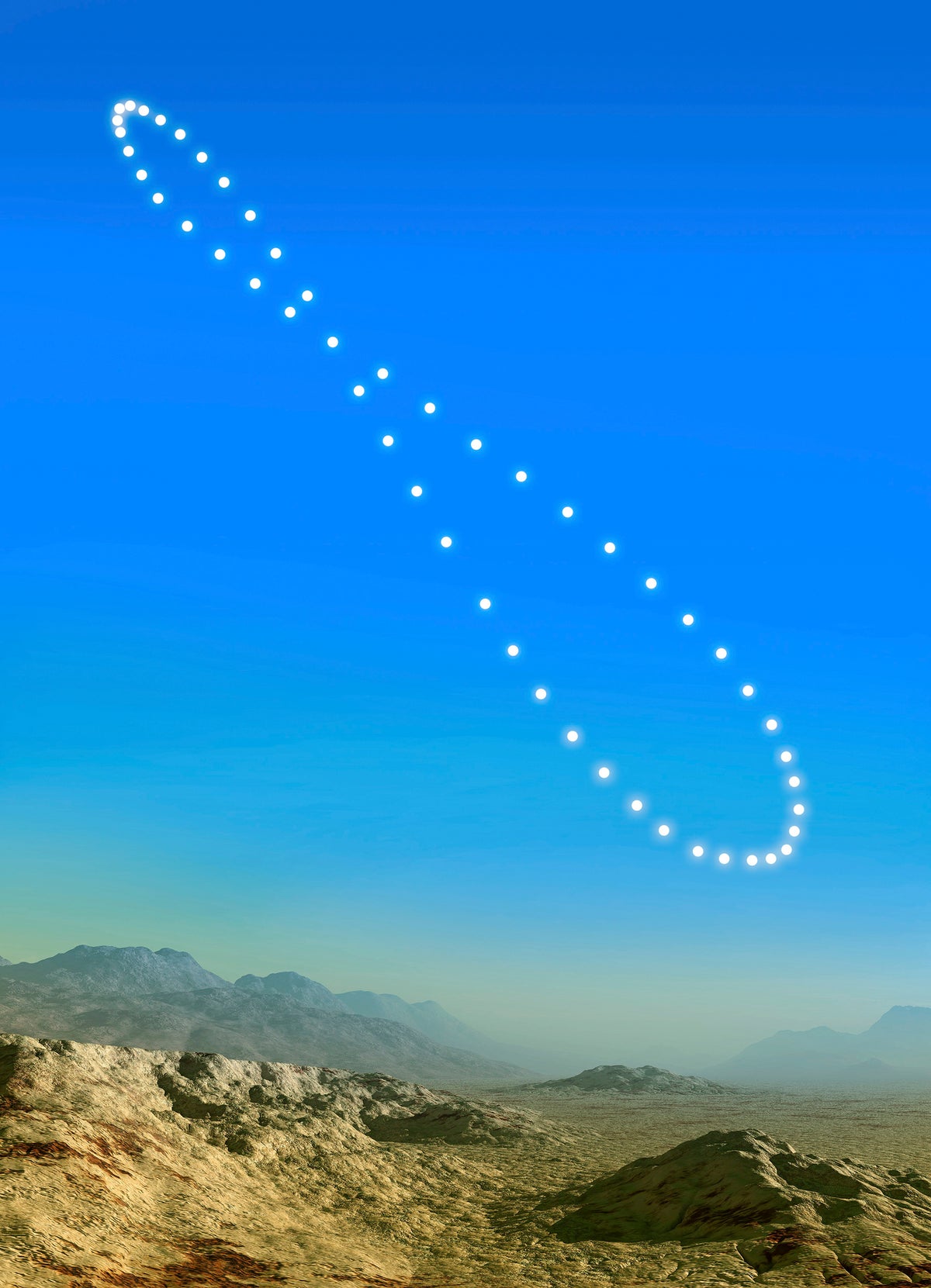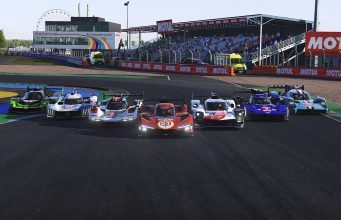The Phoenix Gene Review: A Flight That Goes Down In Flames
The Phoenix Gene is a new narrative-driven third person on-rails shooter that fails to take the genre to new heights.


The Phoenix Gene is a third person on-rails shooter that launches today on the Quest platform. Read on for our full review.
To be entirely frank, I think that growing up, or rather being a grown up…sucks.
Once upon a time, my life was full of piloting action figures through imaginary landscapes and doing battle with the worst bad guys that my imagination could create (or that my birthday money could provide). But as happens to most of us, age and responsibility got the better of me. Eventually I downed my toys in favor of pseudo-maturity, though I never stopped yearning for that same sense of wonder.
What is it?: An on-rails third-person narrative shooter.
Platforms: Meta Quest (reviewed on Quest 3)
Release Date: Out Now
Developer: HEROmation
Price: $24.99
Why am I telling you this? Because when I saw the first trailer for The Phoenix Gene, all of those feelings came rushing back. The gameplay looked exactly like the reality my formative imagination placed upon the real world as I played, and it seemed that at the ripe old age of [insert unnervingly high number] my timelines would finally collide; adulting would finally bring me back to playing with toys. Well, sort of.
The only question left now is who did it better; developers HEROmation, or eight-year-old me? Let us play… 
Troping The Light Fantastic
The Phoenix Gene sees the player take on the role of Jackie, a young janitor working at one of the largest corporate entities in the world. Amid a stupendous lack of narrative preamble, a fiery, dragon-like creature called Firestorm appears and informs you that you are a carrier of the Phoenix Gene. Jackie’s life is subsequently turned upside down, and now she must embark on a hectic journey to uncover the secrets of the multiverse (kind of) and, of course, save the world.
It’s a story built on a set of well-worn sci-fi tropes; you are the chosen one, some AI has gone rogue, a dead parent had a secret - all that served with a supersize bag of 'beware the dangers of corporate greed'. Though none of it digs particularly deep, the story is woven into the game enough that it provides context to the action and prevents the experience from feeling like an aimless floating shooting gallery.
Slipstreamy When Wet
As Jackie begins to unlock the potential of the Phoenix Gene, she gains access to a metaphysical realm called the slipstream, a multidimensional vortex of alternate timelines. This slipstream serves as much of the game’s physical setting as well as a vehicle for some core gameplay mechanics.
With a total of eight levels on offer, each taking around 15 to 20 minutes to complete, The Phoenix Gene could be finished in a few hours under ideal conditions. Due to the clumsy controls and the occasionally infuriating difficulty spike, players are likely to spend significantly longer navigating the slipstream, and not necessarily in a way that will feel rewarding.
Throwing My Toys Out The Pram
Similar to games like the admirable Yuki, the gameplay in The Phoenix Gene sees players controlling their character very much as one might play with a toy. Your Phoenix, Firestorm, hovers in front of you and can be grabbed and passed from one invisible hand to the other, allowing you to guide the character through the game world with your physical movements.
Firestorm also doubles as your weapon, flinging fireballs and other attacks at your enemies as you aim by tilting and rotating your hands. At first, this feels quite cool and very early on there appears to be some potential for the gameplay to be really fun. Sadly, the execution quickly undermines this potential and the game devolves into a frustrating battle against awkward design decisions and unintuitive controls.
In addition to flying and shooting, Jackie and Firestorm also possess a reality toggling ability reminiscent of Ikaruga. Players can switch between the probabilities, alternate realities within the timeline that essentially just switch Firestorm between red and blue, making Firestorm impervious to enemy attacks of that color. Switching probabilities will also alter the physical environment, moving objects in and out of the current reality.
While theoretically interesting, this element of the game is sorely underdeveloped from a level design perspective and often serves more as a distraction than a compelling mechanic.
Frustration By Design
Levels in The Phoenix Gene are an entirely on-rails affair, with the gameplay weaving through the pseudo-psychedelic landscape of the slipstream. Whereas most games of this ilk would see you progressing straight forwards so that players can have a clear line of sight on impending challenges, The Phoenix Gene takes a different approach, weaving the invisible rails through the physical environment. Again, this reads like it should be great; however, the reality is far from fantastic.
As the game draws the player along these invisible rails, there is no indication which path your phoenix will take. This means that in the heart of the action, where you need to dodge enemy fire coming from all around you while avoiding physical obstacles, your character might veer off unexpectedly, running straight into a certain death situation.
This lack of directional guidance is exacerbated by the fact that when switching hands, your phoenix often resets to a central position that can appear behind you if you have been moving in your IRL space, something which is guaranteed to happen. It effectively disappears from view. All this means that in the heat of battle, knowing where your character is and where it’s going is completely unreliable.
Also, in an entirely unintuitive piece of design logic, Firestorm cannot turn around AT ALL, despite the fact he can shoot in full 360 orientation. This is no doubt so that the player can remain oriented to the onward direction of travel. However, when trying to avoid obstacles and dispatch baddies approaching from all sides, it is discombobulating to see fireballs shoot out of its back or wings.
For a game that demands tight reflexes and spatial awareness, this limited, disorienting and downright awkward control scheme feels actively at odds with the gameplay.
Comfort
The Phoenix Gene is an on rails game whereby movement within the game world is completely automated, so there are no comfort options for teleport style movement. There are however options for vignettes, as well as smooth and snap turning, which is just as well seeing as the forced movement can be relatively disorienting at times.

Stepping Back In Time
Visually, The Phoenix Gene feels like something that would be at home on the original Quest. While bright and vibrant, everything just feels a bit low-res and visually noisy. Environments (particularly the slipstream) feel generic, animations are stiff, and character models feel basic. All in all, the art direction brings back memories of the bygone era of standalone VR gaming.
There are some interesting levels that introduce some dynamic visual components, though. The level that sees you flying down the side of a building rescuing a group of base jumpers was both one of the best looking, and most fun to play segments of the game. Firestorm's character design is pretty great, and moving your phoenix around like you’re playing with a super cool dragon toy was initially an enjoyable experience.
Unfortunately, the audio doesn’t fare much better. Voice acting is flat and stilted, although in fairness the scripts haven’t given the actors a huge amount to work with. The music is a nondescript mélange of video-gamey sounds that, while functional, do little to elevate the atmosphere or distinguish moments of tension or triumph.
The Phoenix Gene - Final Verdict
Sadly, The Phoenix Gene reads better as a concept than it plays as a game. While the idea of controlling a dragon-like creature through a chaotic multidimensional rail shooter sounds fun, the reality is that the game's let down by confusing controls, outdated visuals and poor design choices that leave it feeling clumsy and sluggish.
Unlike Yuki, which delivers similar mechanics in a fast, responsive manner that celebrates the nostalgia of play, The Phoenix Gene somehow makes a chore out of using a toy-like avatar to blast robots into smithereens.
UploadVR uses a 5-Star rating system for our game reviews – you can read a breakdown of each star rating in our review guidelines.






















































































































































